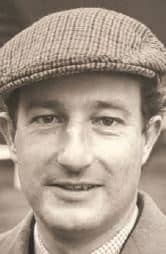Peter Grenfell Bailey was the eldest of three sons, who were brought up by their mother, his father having been killed in the battle of Monte Casino in World War II, when Peter was only 6 years old.

In 1956, he joined the 4th Queen’s Own Hussars, in which his stepfather, Captain John de Moraville, had also served during the War, and was posted to ‘A’ Squadron as a troop leader under Major P.R.G. Young.
He at once joined the regimental riding school subsequently becoming an effective regimental jockey under the auspices of Michael Hanna and Johnnie Powell. He also played in the regimental rugger team as scrum half, a position he had occupied for two seasons in the 1st XV at Harrow.
In 1958, while the Regiment was in Hohne, he and David Vetch, driving David’s Mercedes 220S, came 1st out of four finishers, from 13 starters, in the Rally Class of the 11th Tulip Rally, having covered some 1800 miles over varying terrain in France, Switzerland and Luxemburg.
In 1961, now an Irish Hussar, Peter went to Aden with the Regiment, where he continued with his successes on the racecourse. One afternoon, he rode two polo ponies and one camel to win races on the sand!
In 1962, when the Queen’s Royal Irish Hussars went to Malaysia, he returned to England, where he joined the Royal Armoured Corps Special Reconnaissance Squadron, commanded by Major (later Lieutenant Colonel) Ken Bidie QRIH in Tidworth.
After 8 years of service, he left the Army, married Jane Cundy, and embarked on his second career as a racehorse trainer. Initially learning his trade under Peter Walwyn, he set up his own yard in Sparsholt, near Lambourn. Although he had a relatively small yard by today’s standards, he was very successful in that he trained the winners of several major handicaps, including the Whitbread, Hennessy, Grand Annual Chase and, with probably his best horse, Canasta Lad, the Arkle Chase at Cheltenham in 1974. In all, he had 375 National Hunt winners and 28 on the Flat, including the first-ever Ladies’ Race Winner, Scorched Earth, ridden by Meriel Tufnell.
In 1981, he moved from Sparsholt to the area of the family home in the Avon valley near Amesbury, where he continued to train racehorses for another 10 years before letting out his yard to Seamus Mullins, so that he could work on the farm with his son, Edward, and develop a pheasant shoot to which he often invited his many old army and racing friends.
Until ill health limited his ability to travel to London, he regularly attended dinners of the 4th Hussars Officers’ Dining Club.
He died on the 19th of February 2019, aged 81.


